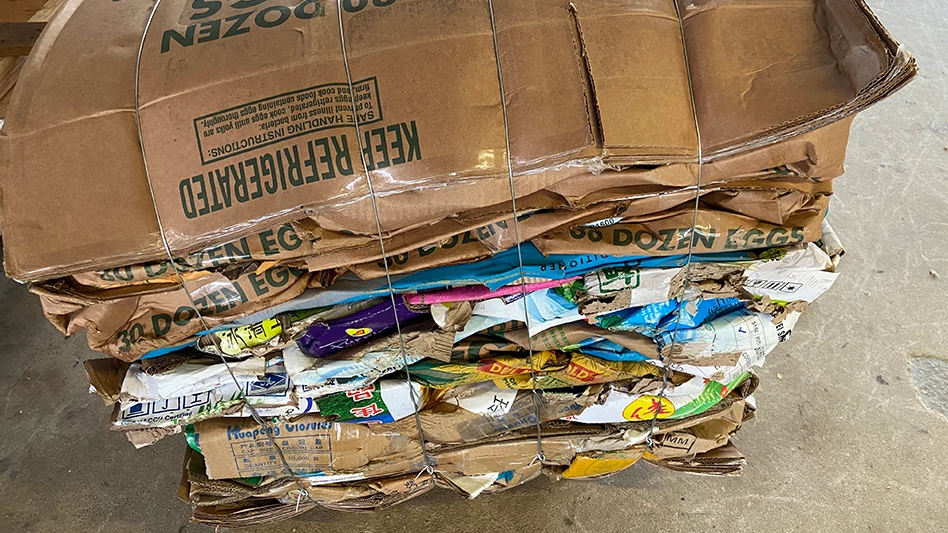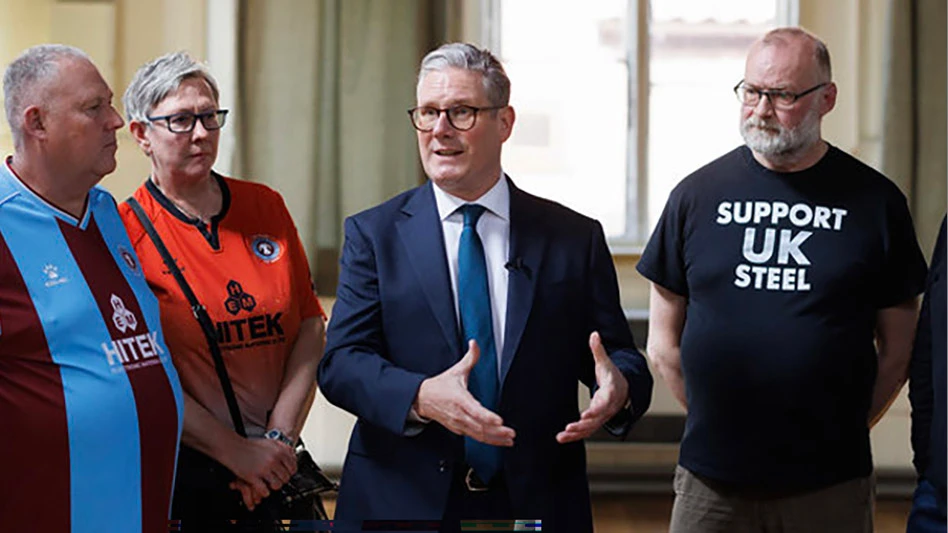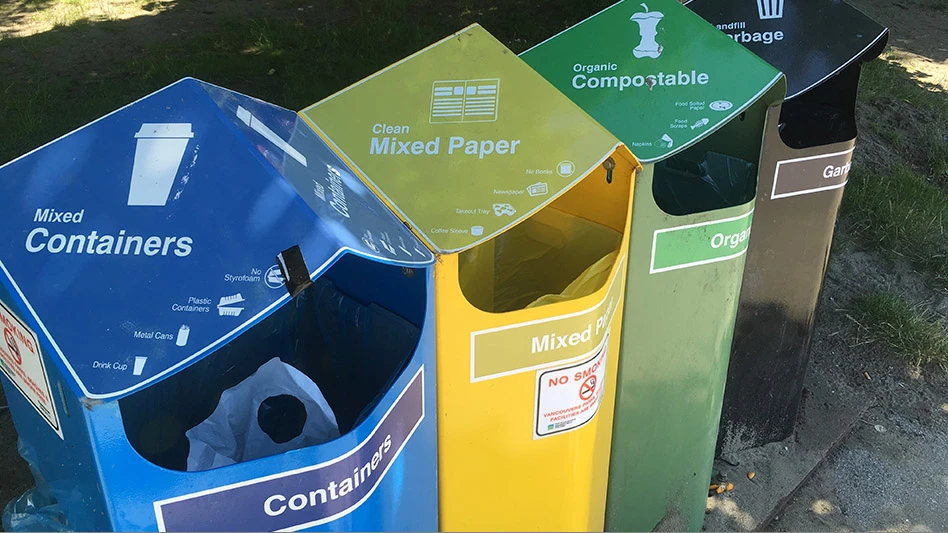 Savvy steel recyclers are making formal workplace safety and health training a top priority. Training is part of a coordinated approach to preventing accidents and injuries that complements what the industry has been investing in for years. Engineering improvements, such as guard rails and machine guarding, now protect workers from exposure to physical hazards. Effective administrative policies and procedures such as lockout/tagout and fall prevention are averting injuries. But, still, too many employees are being injured on the job. Accidents continue to contribute to declining employee morale, productivity and the bottom line.
Savvy steel recyclers are making formal workplace safety and health training a top priority. Training is part of a coordinated approach to preventing accidents and injuries that complements what the industry has been investing in for years. Engineering improvements, such as guard rails and machine guarding, now protect workers from exposure to physical hazards. Effective administrative policies and procedures such as lockout/tagout and fall prevention are averting injuries. But, still, too many employees are being injured on the job. Accidents continue to contribute to declining employee morale, productivity and the bottom line.
Seen as the next step in injury reduction, safety training addresses the human element, the cause of 80 percent of injuries. Owners should be commended for stepping up and making recycling yards safer places to work, but four times as many accidents are caused by unsafe acts than by unsafe conditions.
Money Well Spent
Steel recyclers of all sizes report employee education pays dividends that contribute to a healthier bottom line as workers’ compensation costs decrease, lost time is minimized and productivity improves.
“The time and resources we’ve invested are money well spent,” says Bruno Mannella, corporate health and safety manager for Gerdau Metallics Raw Materials, Whitby, Ontario. “Our incident rates are going down. Our 17 plants just accomplished one year without a lost-time accident. All the energy and time we spent are paying off. If we educate our employees, we will get the result we are looking for: a highly vigilant, caring and self-reliant workforce that is able to make smart decisions for its own well-being and for those who visit our scrap yards.”
Schnitzer Steel, Portland, Ore., and Mervis Iron and Metal, Danville, Ill., report similar results. According to National Health and Safety Director Scott Jacoby, Schnitzer’s Metals Recycling Business has seen “an incident rate reduction since adopting a robust health and safety training program as part of our overall management system efforts.”
Brian Monk, safety director for Mervis, says his company has benefited from a reduction in safety-related costs in the last three to four years.
Smaller operations agree. For All Scrap Metals LLC, a single scrap yard located in Kenner, La., lower accident rates are resulting in discounts on insurance because of a lower experience modification rate.
Meeting Regulatory Requirements
Lower costs, however, are not what prompt most recyclers to increase their safety training. Initial safety training efforts often are launched to meet minimum regulatory requirements and to avoid penalties. But most companies we speak with are sincerely motivated by a desire to create safe work environments for their valued employees.
Bill Patrick, director of corporate safety for Cohen Bros. Inc., Middletown, Ohio, says the bottom line is not the deciding factor in spending for safety training. “If we find something that will work, we’ll do it,” Patrick says.
Last year, David McLean was struggling to get safety training resources for Roanoke, Va.-headquartered Cycle Systems’ nine scrap yards. Since the firm joined Gerdau’s Metallics Raw Materials division, McLean now struggles to find time for all the required safety training without overly affecting production. “Once the guys see us invest all this time, effort and resources into their training, and by bringing in outside trainers to ensure that they are formally trained, they finally understand the level of commitment that we have for their safety. We have experienced a remarkable turnaround in lost-time accidents and OSHA (Occupational Safety and Health Administration) recordables since we’ve transitioned over to a Gerdau company.”
All Scrap Metals Safety Manager Kathy Gaconi says, “People have a right to work in a safe environment, and that’s what we try to create here.”
Effective Leadership
The biggest predictor of success in safety management is passionate support by management. Gerdau clearly signals its commitment by investing heavily in leadership for safety training for supervisors, facilitators and managers at all levels. Cohen Bros. makes the OSHA 30-hour class compulsory for supervisors with safety responsibility.
But nothing speaks quite as loudly as the daily actions of owners and managers who become champions of safety by consistently wearing PPE (personal protective equipment), providing an open-door policy and giving workers a role in the process.
“When one of our owners walks across the yard wearing PPE, he reinforces the idea that safety practices encompass employees, management and owners equally,” says Gaconi. “We’re building a safety culture that emphasizes looking out for your neighbor.”
I have observed that nurturing a strong safety culture has the greatest impact on accident reduction. Regulatory compliance, higher efficiency, more productive employees, reduced incident rates and improved profits are natural outcomes of a shift in values at all levels. Developing a strong safety culture should be top priority for all managers and supervisors.
Game Changers
Third-party trainers are available to help. Recyclers call on professionals to conduct OSHA 10-hour and 30-hour courses, evaluate forklift competency and provide ride-along training for fleet drivers.
At least two organizations specialize in safety training for recyclers. The Institute of Scrap Recycling Industries Inc. (ISRI), Washington, D.C., helps scrap yards develop safety training programs, while Multimedia Training Systems (MTS) produces safety videos for scrap yard workers.
ISRI provides safety reviews for members, including plant walkthroughs and reviews of plants’ compliance with safety training requirements. Joe Bateman, ISRI safety outreach manager, personalizes on-site OSHA 10-hour classes with photos of each plant’s equipment as examples.
Videos are a mainstay of adult education programs. Well-designed and produced, videos capture viewers’ interest. The most successful make a human connection.
“Real-life scenarios shot in working scrap yards featuring actual plant employees, not actors, are the hallmarks of MTS videos,” says Dave Coffaro, president of MTS. “We build our products around accident reenactments and riveting interviews with injured workers and their families. The use of images and animation of actual near-misses and incidents raises awareness. Analysis from professionals provides usable preventive measures.”
Make it Personal
From small recycling operations to multinational enterprises, effective safety training programs have one thing in common: They are truly customized. They are tailored not only to the specific workplace but also to the needs of each employee. “Unless you are delivering the proper training to the person who needs it,” Mannella says, “you are simply going through the motions and wasting resources.”
Dust off your PowerPoint skills and schedule adequate time for managers and supervisors to train workers at the job location. No commercial training product can substitute for hands-on training by knowledgeable people about the hazards associated with each piece of equipment and each operational task. Each company has its own rules. Each plant has its own hazards.
Michael Coleman, vice president of Multimedia Training Systems, Pittsburgh, has spent 15 years visiting steelmakers and recyclers of all sizes, helping develop safety training strategies. More than 300 scrap yards use MTS training videos as part of their monthly safety training.

Explore the September 2013 Issue
Check out more from this issue and find your next story to read.
Latest from Recycling Today
- Acerinox names new North American Stainless CEO
- Greenwave closes 2024 books with red ink
- Steel Dynamics nets $217M on record shipments
- Massive Chinese steelmaking rebound recorded in March
- LME looks into sustainable metal pricing
- OnePlanet Solar Recycling closes $7M seed financing round
- AMCS launches AMCS Platform Spring 2025 update
- Cyclic Materials to build rare earth recycling facility in Mesa, Arizona





